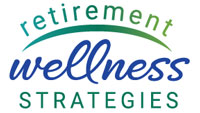Most strokes and heart attacks have something in common – CL OTS.
OTS.
Normally blood whooshes right through veins and arteries with nothing blocking the way. The blood carries oxygen to all of the parts of the body to provide energy to keep everything functioning properly.
Sometimes a fatty diet and genes/family history and some medical conditions lead to fibrin (a protein in the blood) and fat lining the edges of the veins and arteries. Some of this can happen with no real danger.
Then other times, something occurs that takes that fat and fibrin and knocks out a chunk of artery lining or makes the surface rough. This allows platelets (a component of the blood) and fibrin to stick to the rough/injured area. As these continue to stick, the blood goes through a more and more narrow passage. Eventually, blood flow is completely blocked.
When this happens in the brain, a stroke results. When this happens in the arteries providing blood to the heart, a heart attack happens. When this happens in the legs, it is called deep vein thrombosis. When it happens in the lungs it is a pulmonary embolus.
What can you do to prevent these clots? There are several key things:
- Stop smoking if you smoke
- Exercise regularly
- Lose weight if you are overweight
- Avoid sitting for long periods of time (even if you travel, take breaks to move around)
- After surgery or being sick in bed, get up and move as soon as possible and move frequently.
- Lower high blood pressure
- Eat a heart healthy diet
Take control of your future and make these positive changes so you can avoid clots.
For more information, contact us at www.medsmash.com.
For further application, check out my personal blog.
-Michelle Fritsch
